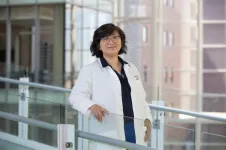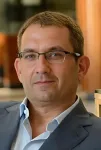Conducted by researchers from the University of Copenhagen and Copenhagen University Hospital (Rigshospitalet), the national, register-based study analysed data from 68,738 women aged 18-45 who underwent ART treatment in Denmark between 1994 and 2017. The primary outcome investigated was live birth after initiating ART treatment.
The study found that the possibility of achieving a first live birth after initiating ART treatment increased progressively with higher levels of education and income. Women with a research education exhibited the highest likelihood (HR=3.02 [95% CI 2.71; 3.35]), compared to those with a primary school education. In addition, women in the highest income group had twice the likelihood of achieving a live birth compared to women in the lowest income group.
Unemployed women had the lowest likelihood of success, being a third less likely to have a live birth after ART treatment compared to employed women [HR=0.67 [95% CI 0.64; 0.69]).
These findings were consistent across the different age groups examined and for both childless women and women who had a child or children prior to ART treatment, indicating a robust association between socioeconomic position and achieving a live birth after initiation of ART treatment.
Rikke Bruun Uggerhøj, lead study author from the University of Copenhagen, Department of Public Health, comments, “While prior studies have suggested a link between higher socioeconomic status and improved ART outcomes, our research delves deeper, providing clear data-driven insights into the specific influence of education, employment and income in determining the success of fertility treatments.”
“Our results confirm that women with a higher socioeconomic status were more likely to achieve a live birth. Subanalyses revealed that they were more likely to continue ART treatment after unsuccessful attempts, potentially explaining the observed social inequality in achieving a live birth after ART treatment.”
“What was surprising, however, was that even in Denmark, where three fresh ART treatments are currently offered free of charge, social inequality impacted the likelihood of initiating second and third ART treatments. This suggests that factors beyond the financial burden alone contribute to these disparities in outcomes.”
Infertility is on the rise globally, with an estimated lifetime prevalence of 17.5% [2]. As this issue continues to grow, the demand for fertility treatments is expected to increase [3]. Ensuring fair access to these treatments and equitable outcomes is thus crucial to address the needs of individuals and couples experiencing infertility, regardless of their socioeconomic status.
Commenting on this issue, post doc researcher Ditte Vassard, co-author of the research from the Copenhagen University Hospital (Rigshospitalet), says, “Within the context of this study, it is clear that financial constraints alone do not always determine outcomes; multiple socioeconomic factors come into play. For instance, women with higher education levels may have jobs that offer flexibility or accommodations for treatment-related responsibilities, supporting them to continue ART treatment after unsuccessful attempts.”
“To tackle disparities in outcomes effectively, policymakers and healthcare professionals must adopt a comprehensive approach that acknowledges and addresses the multifaceted challenges people encounter in their lives, including practical considerations, resource constraints and the emotional burden.”
Professor Dr Carlos Calhaz-Jorge, Immediate Past Chair of ESHRE, states, “This important study highlights the complexity of the socioeconomic factors that influence the results for ART. The authors found that even a high level of public funding for these treatments is not enough to prevent social inequalities in the final outcomes. The political and social implications of these findings warrant deep consideration from all stakeholders.”
The study abstract will be published today in Human Reproduction, one of the world’s leading reproductive medicine journals.
ENDS
Notes to editors:
A reference to the ESHRE Annual Meeting must be included in all coverage and/or articles associated with this study.
For more information or to arrange an expert interview, please contact the ESHRE Press Office at: press@eshre.eu
About the study author:
Rikke Bruun Uggerhøj has obtained a Master of Public Health, with a special interest within reproductive medicine and epidemiology. During their master’s programme, they have been deeply engaged in reproductive health as a therapeutic area. Their aim is to contribute an analytical approach to complex healthcare and societal issues within the field, thereby contributing new knowledge that can hopefully help create positive changes for women and couples undergoing fertility treatment.
The current study is the result of a master's project developed in collaboration with their colleague Andrea R. Skaaning and experienced supervisors Ditte Vassard, Lone Schmidt and Frederik Kyhl.
About the European Society of Human Reproduction and Embryology
The main aim of ESHRE is to promote interest in infertility care and to aim for a holistic understanding of reproductive biology and medicine.
ESHRE collaborates world-wide and advocates universal improvements in scientific research, encourages and evaluates new developments in the field, and fosters harmonisation in clinical practice. It also provides guidance to enhance effectiveness, safety and quality assurance in clinical and laboratory procedures, psychosocial care, and promotes ethical practice. ESHRE also fosters prevention of infertility and related educational programmes and promotes reproductive rights regardless of the individual’s background. ESHRE’s activities include teaching, training, professional accreditations, mentoring and career planning for junior professionals, as well as developing and maintaining data registries. It also facilitates and disseminates research in human reproduction and embryology to the general public, scientists, clinicians, allied personnel, and patient associations.
Website: https://www.eshre.eu/
About Human Reproduction
Human Reproduction is a monthly journal of ESHRE and is one of the top three journals in the world in the field of reproductive biology, obstetrics and gynaecology. It is published by Oxford Journals, a division of Oxford University Press.
References:
Uggerhøj, R. et al. (2024). Social disparities in achieving live birth after initiating ART treatment: a national register-based study among women in Denmark. Human Reproduction. Available at: https://academic.oup.com/humrep/issue/39/Supplement_1
World Health Organization. (2024). 1 in 6 people globally affected by infertility: WHO. Retrieved May 31, from https://www.who.int/news/item/04-04-2023-1-in-6-people-globally-affected-by-infertility#:~:text=Large%20numbers%20of%20people%20are,care%20for%20those%20in%20need.
Lazzari, E., Potančoková, M., Sobotka, T., Gray, E., & Chambers, G. M. (2023). Projecting the Contribution of Assisted Reproductive Technology to Completed Cohort Fertility. Population research and policy review, 42(1), 6. https://doi.org/10.1007/s11113-023-09765-3 END



